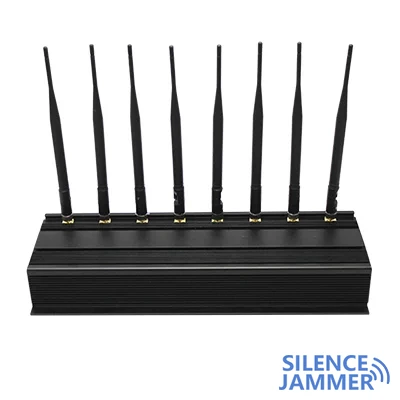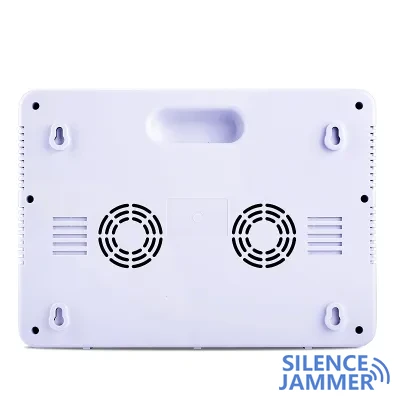In modern society, the problem of vehicle theft is becoming increasingly serious, and vehicle tracking technology has emerged. LoJack is a widely used vehicle tracking system designed to help owners recover stolen vehicles. However, with the development of technology, signal jammer devices have become more and more popular, and they can interfere with and block various wireless communication signals. So, can signal jammers have an impact on LoJack systems? This article will explore how the LoJack system works, the effects of signal jammers, and how to protect against this interference.

How the LoJack system works
The LoJack system is a radio frequency (RF) tracking device that uses radio signals to help law enforcement agencies locate and recover stolen vehicles. Here's how it works:
- Installation of the device: LoJack devices are usually hidden and installed in concealed areas of the vehicle, making them difficult for thieves to detect.
- Activation Signal: When a vehicle owner reports their vehicle as stolen, the LoJack Center activates the device.
- Transmitting a Signal: When activated, the LoJack device will periodically transmit a radio signal.
- Tracking Signals: Law enforcement vehicles and helicopters equipped with LoJack receivers are able to pick up these signals and triangulate the location of the stolen vehicle.
The main advantages of the LoJack system are its efficient signal transmission and precise positioning capabilities, even in places with weak signals such as underground parking lots.

The principle of signal jammer
- Determine the frequency band: First identify the frequency band used by the target device.
- Transmitting interference signals: transmitting strong interference signals in this frequency band.
- Blocking communication: Covering the target signal with interference signals, making the target device unable to receive or send data normally.
A signal jammer (also known as a signal jammer or jammer) is an electronic device that interferes by emitting electromagnetic waves of the same frequency as the target signal, thereby blocking the normal transmission of the target signal. The working steps of the jammer include:
Common signal jammers can interfere with the signals of wireless communication devices such as mobile phones, Wi-Fi, and GPS.

Effects of Signal Jammers on LoJack
- Theoretical implications
- Practical application challenges
- Actual case analysis
In theory, signal jammers can indeed interfere with LoJack systems. LoJack relies on radio signals for tracking and positioning. If a jammer can emit interference signals in the same frequency band as LoJack, it may block LoJack's signal transmission, rendering the tracking and positioning functions ineffective.
Although theoretically possible, in practice, jamming LoJack signals is not easy. The main reasons include:
Frequency Band Diversity: The frequency bands used by the LoJack system are relatively unique and may vary by region and version, which requires jammers to tailor the frequency bands accordingly.
Signal Strength: LoJack devices are designed with a strong signal that can penetrate buildings and other obstacles. The jammer needs to emit a strong enough jamming signal to effectively block the LoJack signal.
Concealed installation: LoJack devices are often installed in concealed areas of vehicles where they are difficult to detect, making interference more difficult. Even if thieves use a jammer, they still need to find the specific location of the device to effectively interfere.
In some cases, thieves did try to use signal jammers to block LoJack signals, but the success rate was not high. Law enforcement agencies are often equipped with specialized equipment capable of identifying and responding to signal interference. This makes signal jammers of limited practical effectiveness in blocking LoJack tracking.
- Technology upgrade
- Legislation and supervision
- Enhance law enforcement
Methods to prevent signal interference
In order to deal with signal interference, the LoJack system continues to undergo technical upgrades, including:
Multi-band operation: Use multiple frequency bands for signal transmission to increase the difficulty of interference.
Encrypted communication: Protect signal transmission through encryption technology to prevent interference and tampering.
Enhance signal strength: Increase signal emission strength, making it difficult for jammers to effectively block it.
Many countries have strict legal regulations on the use of signal jammers, and unauthorized use is illegal. In the United States, for example, the Federal Communications Commission (FCC) prohibits the unlicensed use of signal jammers.
Law enforcement agencies can quickly identify and locate signal jammers by equipping them with advanced detection equipment to ensure the normal operation of the tracking system. In addition, raising the prevention awareness of car owners through public education and encouraging them to promptly report suspicious activities will also help reduce the threat of signal interference.
Signal jammers can theoretically affect the LoJack system, but in actual applications, the interference effect is limited due to factors such as frequency band diversity, signal strength, and concealed installation. The LoJack system continues to enhance its ability to prevent signal interference through technical upgrades and legal supervision. For car owners, installing a LoJack system is still an effective means of preventing theft, and law enforcement agencies are also constantly improving technical means to deal with signal interference to ensure the safety of public property.


